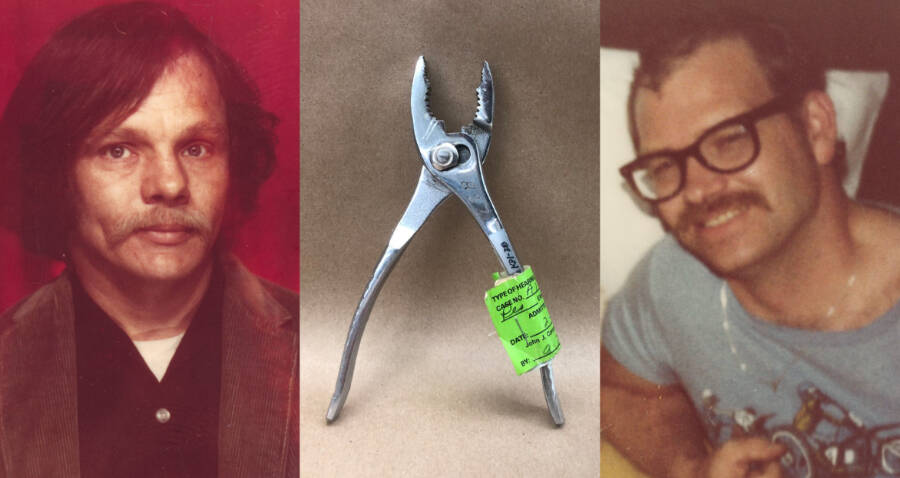
Episode 8 & 9 - Toolbox Killers
Episode 8 & 9 - Toolbox Killers - Blog about the show, make sure to check us out on your favorite podcast platform!
TRUE CRIME
Daniel



The ToolBox Killers
The names Lawrence Bittaker and Roy Norris are synonymous with some of the most depraved and sadistic crimes in American history. Known infamously as the “Toolbox Killers” for their use of common workshop tools as instruments of torture, their five-month spree of kidnapping, rape, and murder in 1979 represents a chilling study in the depths of human evil.
The Men Behind the Monsters
The partnership that would produce such horror was forged in the crucible of the California Men’s Colony prison, but its roots lay in two profoundly broken childhoods.
Lawrence Bittaker was born in 1940 and immediately placed for adoption. His adoptive family moved frequently, and Bittaker never felt loved or rooted. A bright child with an IQ of 138, he found school tedious and dropped out, turning to petty crime which he claimed was a cry for attention. His adolescence was a rapid descent into more serious offenses—car theft, robbery, and a near-fatal stabbing of a supermarket employee who caught him stealing. Psychiatrists who evaluated him in prison diagnosed him as a “borderline psychopath,” highly manipulative and devoid of empathy.
Roy Norris, born in 1948, faced a different kind of neglect. Conceived out of wedlock, he was an unwanted child shuffled between his drug-addicted mother and a series of neglectful foster families, where he claimed he was starved and sexually abused. His pathology manifested early, with a history of violent sexual offenses beginning shortly after his honorable discharge from the Navy. Diagnosed with schizoid personality disorder, Norris told therapists his biggest sexual stimulation was “seeing frightened young women.”
In prison, these two damaged men found each other. Bonding over shared misogyny and violent fantasies, they hatched a plan: upon their release, they would kidnap, rape, and murder one girl for every teenage year from 13 to 19.
The “Murder Mac” and the Spree of Terror
After their releases in late 1978 and early 1979, Bittaker and Norris reunited. They financed the purchase of a silver 1977 GMC van, which they nicknamed “Murder Mac.” Its sliding passenger door was perfect for quickly snatching victims off the street.
They began with “practice runs,” picking up over 20 hitchhikers and releasing them unharmed to refine their tactics. They scouted locations, finding a secluded fire road in the San Gabriel Mountains and replacing the lock with their own.
Their first victim was 16-year-old Lucinda Schaefer, abducted on June 24, 1979, as she walked home from church. After raping her, they argued over whether to kill her. Norris attempted to strangle her but was disturbed by “the look in her eyes” and vomited. Bittaker finished the job by twisting a wire coat hanger around her neck with Vise-Grip pliers. They threw her body into a canyon, believing the animals would destroy the evidence.
Two weeks later, they picked up 18-year-old Andrea Hall. After a strenuous fight in the van, they subdued her. Bittaker took Polaroid photos of her in states of “sheer terror” as she begged for her life. He then killed her by driving an ice pick into each ear before throwing her body off a cliff.
On September 3, they abducted two friends: 13-year-old Jacqueline Lamp and 15-year-old Jackie Gilliam from a bus stop. The girls were held captive for almost two days and subjected to repeated rape and torture. Bittaker even recorded himself raping Gilliam. They were finally murdered with an ice pick and a sledgehammer, their bodies discarded over an embankment.
Their final victim was 16-year-old Shirley Ledford, abducted on Halloween night while hitchhiking. What followed was an hours-long ordeal of unimaginable brutality, much of which Bittaker recorded on a cassette tape. Ledford was beaten with fists and a hammer, tortured with pliers, and raped repeatedly as her attackers mocked her screams. Norris finally killed her by strangling her with a coat hanger. To mock the police, they dumped her body on a random suburban lawn.
The Investigation and the Chilling Tape
The case broke due to a stunning lapse in judgment by Norris. He bragged about the murders to an old prison acquaintance, Joseph Jackson, who immediately went to the police. This confession led detectives to a victim they didn’t know existed: a woman named Robin Robeck, who had been abducted, maced, and raped by the duo but released. She positively identified photos of Bittaker and Norris.
A search of Bittaker’s van and motel room uncovered a nightmare’s worth of evidence: the tools used in the murders, souvenirs taken from the victims, and hundreds of Polaroids of young girls. Most horrifyingly, they found the tape recording of Shirley Ledford’s torture.
The 17-minute audio is considered one of the most disturbing pieces of evidence ever presented in an American courtroom. It captures Ledford’s desperate, agonized screams and pleas for mercy (“No, don’t touch me!”) intercut with the killers’ laughter and taunts. To this day, the FBI uses the recording to desensitize new agents to the raw sound of extreme violence.
Faced with overwhelming evidence, Norris quickly confessed and struck a plea deal, agreeing to testify against Bittaker in exchange for a life sentence. He led police to the remains of Gilliam and Lamp; an ice pick was still lodged in Gilliam’s skull. The bodies of Schaefer and Hall were never found.
Trial, Death, and a Legacy of Horror
At trial, Norris was the star witness, detailing their gruesome pact. Bittaker’s defense tried to pin all the blame on Norris, but the evidence—especially the tape—was incontrovertible. The jury took just 90 minutes to sentence Bittaker to death.
Both men died in prison of natural causes—Bittaker in 2019 and Norris in 2020—cheating the justice system of their executions.
Bittaker never expressed genuine remorse, instead filing frivolous lawsuits from prison and corresponding under the nickname “Pliers.” Norris claimed he only participated out of fear of Bittaker and didn’t enjoy the killing, a statement thoroughly dismissed by investigators given his long history of violent sexual predation.
The case left a permanent scar on those who worked on it. Lead investigator Paul Bynum, haunted by the crimes, committed suicide in 1987. Prosecutor Stephen Kay, who called it the worst case he ever prosecuted, was plagued for years by nightmares of arriving too late to save the girls.
The story of the Toolbox Killers is more than a catalog of violence; it is a grim reminder of how profound childhood trauma can fester into monstrous evil, and how a chance meeting between two broken men can unleash a nightmare upon the world. Their legacy is one of unspeakable pain, a chilling audio tape, and five young lives brutally erased, forever remembered only as victims of two of history’s most cruel and calculated predators.


